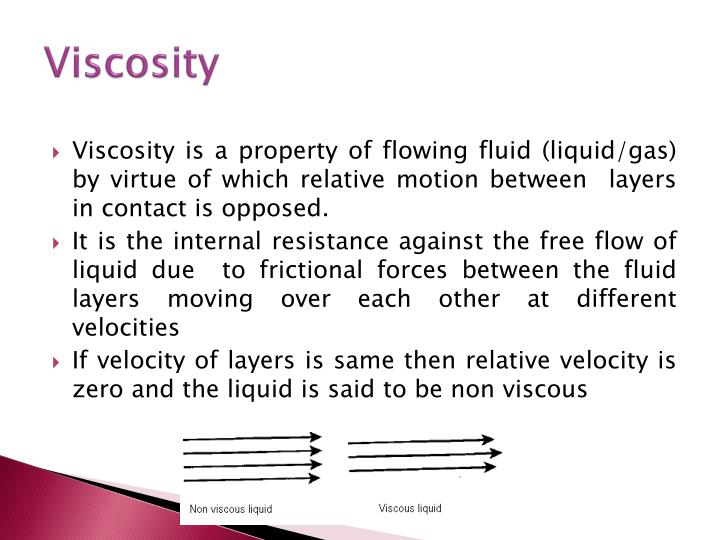
In this context, “η” is consistent where it represents the viscosity coefficient. Although, viscous force possesses more negativity because the force performs in the direction and motion that performs in the most opposite direction to the liquid flow. One of the most interesting facts that are observed is the viscosity of the liquid minimises with the rise of temperature. Attractive binding energy is minimised and as a result, the viscosity is minimised. Viscous force performs in the objective direction in which the liquid moves compared to the fact of the force. Viscous force demonstrates the fluid friction, which resists the high movement of the fluid layers that is adjacent. Thorough observation and different perspectives help in developing the consumption of fuel. Significance and issues of using viscous force Viscous force differs from normal friction, as it is proportional to the area of surfaces whereas solid friction is an area independent of the contacting solid surfaces. In physics, “ Viscosity” or “viscous force” controls the steady flow of liquid in some of the different processes such as “surface coating”, moulding and spraying injections. Along with the viscous force, viscous friction is highly necessary for the liquid flow because there is high resistance to the corresponding motion. It is highly important in comprehending the selection of the size of filters and valves, piping and instrumentation. Viscous force is considered as the crucial factor that plays a remarkable role in demonstrating the loss of friction due to the energy of shear in the processing system of fluid. Viscous force is demonstrated as the necessary parameter as it can be utilised as the quality indicator by the distinct customers. The “viscous force or viscosity” is reliable on the liquid adhesive and intermolecular forces. Viscous force or viscosity is demonstrated as the physical property which is the calculation of how slow or fast the flow of liquid is exaggerated. The liquid layers of the viscous forces rely on the layering area where the distance and velocity of the two layers are comparative. Viscous force’s formula is measured by calculating different shear stress. Consider the instance of polymer solutions, which are considered as the most complicated liquids where the ratio can be distinct from 3 and can rarely vary with the “extension” or “shear” rate.

Newtonian liquids are referred to as liquids that reflect no viscosity variation with the extension or shear rate. The value obtained from the viscous force is mentioned as the ratio of Trouton. In the context of Newtonian fluids, the extensional viscosity ratio as compared to the shear ratio is three. Viscous forces are transitionally different for different fluids. Viscous force is the noun form of viscosity that possesses a similar meaning with different representations. Crude oil, Water, and glycerine are some of the instances of fluid whose dynamic viscosity and kinematic viscosity differs from the others. The flow of viscous force exhibits the transformation point from the semisolid to the solid behaviour as the liquid amount maximises to coat the boundaries of grain. The study of viscous force is related to the viscosity, which helps in denoting the opposition to the flow.

As a result, the comparative velocity of the fluid concerning the surface area is considered as zero. The particles of the flow of molecules near the surface area adhere to it. The Viscous force is defined as the internal or resistance force that is given by the fluid when it is highly subjected to the greatest tangible forces on the shear and surfaces.


 0 kommentar(er)
0 kommentar(er)
